Germany
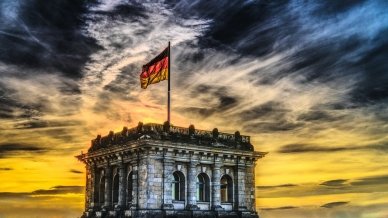
Germany is the second populated country in Europe with every eighth of its citizens as a migrant.
For good reason has it been considered Europe’s engine since olden times.
German scientists, engineers, and pharmacists became the authors of the multitude of discoveries and inventions that have simplified the life of humankind significantly.

General Information
Germany is located in Central Europe and borders nine other countries: Poland, the Czech Republic, Denmark, France, Belgium, the Netherlands, Luxembourg, Switzerland, and Austria. From 1949 to 1989, it was divided into West and East Germany with the capitals in Bonne and Berlin.
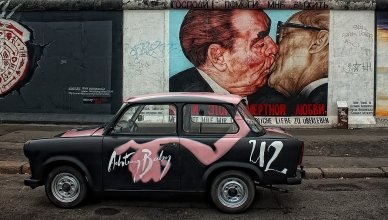
Berlin Wall
In 1989, the milestone event took place - the Berlin Wall fell.
It heralded the further reunification of German territories and the creation of a single state under the name of the Federal Republic of Germany. Berlin became its capital in 1991 based on the Bundestag decision.
Now Germany consists of 16 partly sovereign federated states, three of which (Berlin, Hamburg, and Bremen) are considered the city-states, and the remaining thirteen are area-states. Germany also has marine access to the Baltic and North Seas.
The history of this country spans several millennia. It began when Germanic tribes settled on the territories of modern Scandinavian countries and expanded the borders of their settlement at the expense of West Slavic lands.
Gradually, Germany united several nationalities - Italians, Franks, Balkan and West Slavs. A powerful state under the name of the Holy Roman Empire (Reich) emerged in 962 and existed till 1806. As the successor and continuation of the ancient Roman civilization and the Frankish Empire, it included the Kingdoms of Franks, Italy, Netherlands, and Bohemia.
However, the country was significantly affected by many processes. The Reformation, Thirty Years’ War, the opposition of the two most powerful regions - Austria and Prussia, and wars with France led to the collapse of the once-mighty state. The Emperor gave up his power.
A new state called German Confederation was formed in 1815. Thirty-eight German countries were united under the rule of the Austrian emperor. The Union ceased to exist in 1866. Five years later, the German Empire under the rule of Emperor Wilhelm I and Otto von Bismarck as the Chancellor appeared as a new state. It also had the other name - Second Reich.
The Kiel mutiny in November 1918 initiated the German Revolution and the end of the German Empire. The latter was replaced by a new state formation - the Weimar Republic - based on the principles of federal constitutionalism that existed till 1933.
At that moment, the country was deeply in an economic and political crisis. In 1933, Adolf Hitler became the Chancellor and promised to solve all the issues. The fascist dictatorship was imposed: the activity of all parties except for Hitler’s Nazis was prohibited. Opposition underwent constant persecution. That period is called the Third Reich.
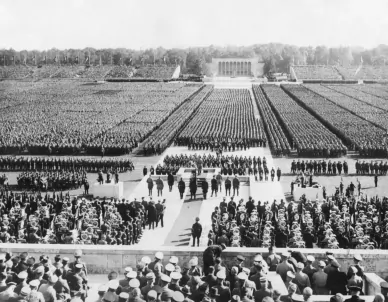
Adolf Hitler at the Nuremberg Congress in 1938
In 1939, Germany began World War II and surrendered in May 1945. Occupation of the country by the Soviet, American and French troops led to its division into West and East Germany existing till the 1990s.
Though the country was unified more than 30 years ago, there are still substantial differences in the economic, cultural, and humanitarian development between the western and eastern parts. Nonetheless, this does not deter Germany from remaining one of the global leaders in the import and export of various goods. Moreover, the country has managed to maintain a high standard of living, which makes it the sixth in the world in this area.
Germany is a European leader in automobile manufacturing, chemical, pharmaceutical, and food industries. The German Big Three includes Audi, BMW, and Mercedes automobiles, the most purchased in the world.
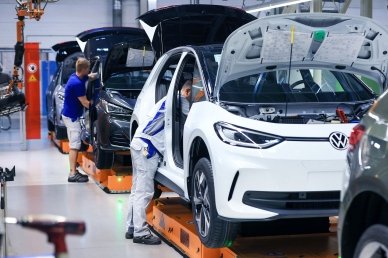
Automotive plant in Germany
The Federal Republic of Germany is a socially-oriented state with high standards of medical, educational, insurance, and retirement guarantees for its citizens.
Such humanitarian policy attracts many migrants from Arab and African countries. Now they make not less than 15% of Germany’s population, which has become a so-called burden for the German taxpayers. For this reason, the social security package has been cut substantially, and this fosters a growing discontent of Germans.
Germany is the founder of the European Union and its key country. It is also a member of NATO. There is only one official language - German, and one official currency - the euro.
To enter the country, visitors need a visa.
Directions
Germany can be easily reached by various means of transport, be it a bus, a train, or a plane. However, the coronavirus pandemic has affected the operation of many transport companies, so it is necessary to take into account the new realities when planning a trip.
Travelling by Bus
There are many bus lines to get to Germany from the other European countries. However, it is recommended to read through travel advisories of the chosen transport company to be aware of the latest information.
Travelling by Train
Travelling to Germany by train is much easier than one might think. There can also be routes with transfers, but this will not make the trip daunting.
Travelling by Plane
Flights make the trips to Germany less time-consuming and more convenient. It is a must to be aware of entry requirements and travel regulations in order to comply with the country’s legislation.

Accommodation
The three basic options for travellers and those who come to Germany for employment are hotels, hostels, and rented apartments. There are hotel chains and ordinary hotels. The chains, as a rule, charge higher prices but the stars correspond to the quality of service. The stars of ordinary hotels mean the number of services provided.
Cheap rooms may be booked with the Ibis hotel chain. But those who are travelling by car often opt for Etap motels. They are usually located in the suburbs of big cities or along major motorways.
The other budget options are boarding houses, guest houses, and hostels. Boarding and guest houses are very quiet and cosy, and thus, a perfect idea for married couples with children or elderly tourists. Young people favour hostels - noisy and cheap dormitory-style type of accommodation. Conditions there are quite good due to fresh bed linen, comfortable beds, and clean shared bathrooms.
Tourists may be offered a comfortable room at a private farm. They will see the German rural life from the inside, taste the food of German states, go on fishing, and try many other things. It is much cheaper in comparison with city hotels. But no commotion will be found here either - just a simple, slow-paced rural life.
The rental pricing is extremely dependent on how big a city is, season, and scheduled events.
For example, two months before Oktoberfest, it is very problematic to find a room or at least a place in a room in Munich. What is more, the price of rent increases by many times.
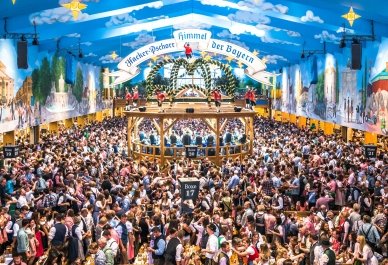
Oktoberfest's Hacker-Pschorr tent
Here are several budget options in various German cities:
- Bavaria Kur- und Sport is cheap camping in Eging am See. The park is suitable for short-term stays. The territory is quite clean with free parking. Toilets and showers are shared, but the rooms are simple and cosy.
- Bleialf Camping in Rheinland-Pfalz located a 90-minute drive from Cologne offers rooms with lounges, a swimming pool, and free parking.
- Check-in Hostel is located in the capital, an 8-minute drive from the Brandenburg Gate. It is a noisy place with the restaurant on the ground floor. The rooms and bathrooms are clean.
- MEININGER Hotel Hamburg City Center is a quality hotel in Hamburg next to the marketplace. Not far from the hotel, there are the Blankenese villas and city museums. Besides, this clean and cosy hotel offers free Wi-Fi, parking, and breakfast.
- a&o Frankfurt Ostend is a very nice hotel in Frankfurt, Ostend district. Tourists admire clean rooms, versatile cuisine, and convenient location. The hotel charges fees for parking and breakfasts. Besides, it is also possible to live here with a pet, but for an additional fee.
German real estate websites offer cheap accommodation for families or groups of friends. For example, the most popular website is https://www.immobilienscout24.de/ that features more than a million options every month.
Places to See
In Germany, everyone will find a place to their liking. Those interested in the country’s history and architecture will definitely attend a multitude of castles, museums, and national galleries. Those who are fond of eco-tourism will discover the richness of German nature: its 14 national parks, biosphere reserves, and other protected natural monuments.
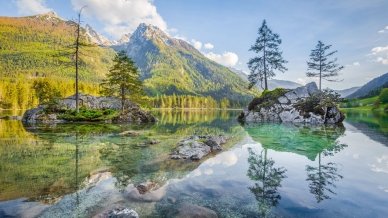
Berchtesgaden National Park
Baltic beaches and coasts of the North Sea, mineral springs of Bad Neuenahr (suburbs of Bonn), or thermal waters of Bavaria will make the rest unforgettable.
Many tourists come to the German ski resorts and immerse themselves in the beauty of Black Forest - Schwarzwald - that borders France.
There are no bland cities in Germany, each of them has its charm and landmarks that mesmerise into coming there again.
Berlin
Some of the places of the German capital have remained most talked about for more than a hundred years. Everyone has ever heard of the Berlin Wall, Brandenburg Gate, Reichstag, Alexanderplatz, or the Humboldt University of Berlin.
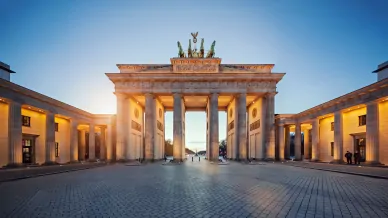
Brandenburg Gate
Apart from those places, Berlin State Opera is worth visiting too. It is one of the oldest buildings in the city and the largest theatre in Germany. The voice of Chaliapin, the sounds of polka and waltz of Strauss, and masterpieces of many other genius composers of classical music used to imbue its walls.
Royal Porcelain Factory is one of the ascendants of exquisite European porcelain. Thin and light cups and plates, sugar bowls, kettles, and pots are not of worse quality and delicacy than famous Chinese or Japanese services. So a tea set or a hand-painted plate will become a luxurious souvenir or present for close people.
Besides, tourists frequently attend Berlin Tiergarten, Biesdorf Castle, Botanic Garden, and the city’s water parks.
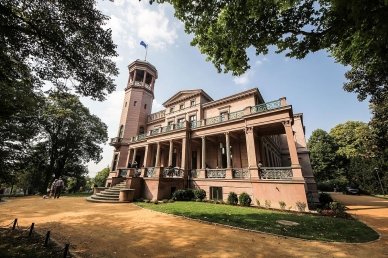
Biesdorf Castle
Munich
The Bavarian capital is worth being considered the heart of Germany, though the Bavarians themselves stick to another viewpoint. “Bayern ist nicht Deutschland,” they say. However, this phrase is not an urge to separatism but rather a focus on Bavarians’ identity and their dissimilarity to the rest of the Germans.
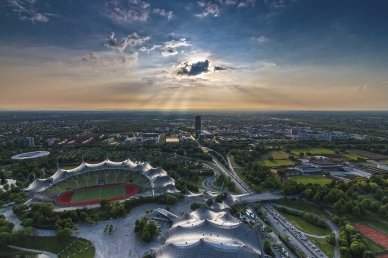
Munich
There is no other place like this one where national traditions are so honoured. Any local fest cannot be held without bright Alpine costumes and traditional folk songs.
No one can forget about Oktoberfest, the main annual event that takes place in the second half of October when the weather is still fine. The festival of Bavarian beer lasts for two or even three weeks. More than five million tourists from all over the world come here during this time. During this merriment, Bavarian beer is flowing like water, and music is heard within a decibel scale. Visiting Oktoberfest is a must for all party animals and thrill enthusiasts. However, it is also essential to find accommodation in advance when the choice is extensive and prices are still affordable.
Munich would remain one of the most beautiful European cities even if there was no beer festival. Local squares, city halls, Catholic cathedrals, and museums have preserved bits and pieces of history.
When in Munich, tourists should visit such places as the Alte Pinakothek (one of the most spectacular art museums), St. Peter’s Church (the oldest church in a city), and Frauenkirche (Holy Mary’s Cathedral - the main cathedral in Munich).
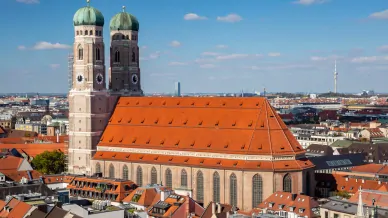
Frauenkirche (Holy Mary’s Cathedral), Munich
Do not forget to walk through the alleys of the Englischer Garten and Hofgarten, feel the beauty of Bavarian museums, and sure thing - take some selfies in the background of the Karlstor at Karlsplatz (Stachus).
Cologne
The history of the fourth-populated German city lasting two millennia has become reflected in numerous attractions aged more than a thousand years.
The most visited and recognisable landmark is Cologne Cathedral (Kölner Dom). In the 9th century, the original building was destroyed by fire. And construction of the new cathedral took more than 600 years. At present, it is one of the most magnificent architectural objects not only in Germany but in Europe.
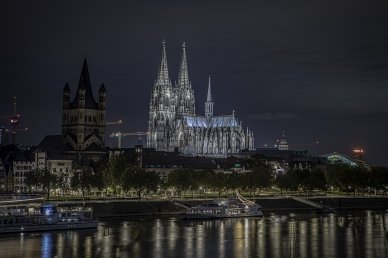
Cologne Cathedral (Kölner Dom)
The other must-see places in Cologne include Augustusburg Castle (also known as Rhein’s Versailles), Fragrance Museum (a perfect place for those interested in the history of perfumes), and Chocolate Museum (for those who are sweet teeth). Children will definitely be fascinated with the city’s zoo and Phantasialand - the incredible theme park.
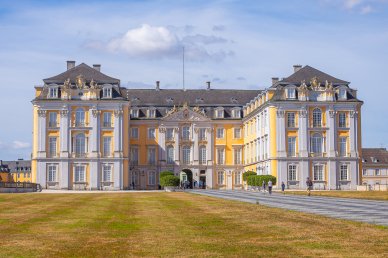
Augustusburg Castle
The above-mentioned places constitute only a tiny part of what can be visited and seen in Germany. There are so many outstanding attractions that one trip is surely not enough to duly explore all the wonders. You will need to settle in this incredible country for several years.
Food
Germans eat much and well. Portions served in cafes and restaurants are so big that two people can be full with one. Though German food is simple, it is delicious and healthy due to ancient cooking traditions.
People here eat a lot of natural meat like chops, schnitzels, and schnellklopse while minced meat is a rare thing. Sausages are highly respected by Germans because the latter ones were their original inventors.
Each city or village has local sausage manufacturing based on unique recipes preserved up to date.
The first courses of German cuisine are, as a rule, thick soups. Eintopf means ‘one pot’ that contains pieces of meat, poultry, smoked products, and vegetables. The dish stems from German villages and was first cooked by countrywomen who cared about feeding their families until full. Those filling ingredients had to simmer for a long time in a pot. That is the way Eintopf is cooked these days.
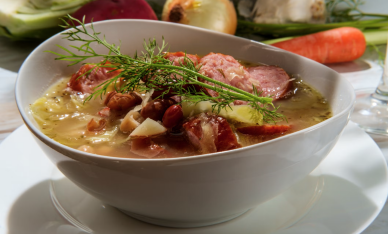
Eintopf ‘one pot’ soup
Eisbein is a classic second-course dish of German cuisine. It is a pork knuckle cooked for a long time to be very tender. Eisbein is usually served with sauerkraut and mashed potatoes.
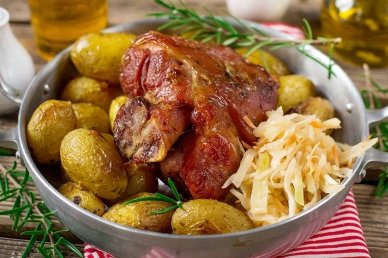
Eisbein
Coffee is a national favourite, the number one non-alcoholic drink in Germany. If earlier it was consumed only in its classical variant - black and plain, now Germans enjoy latte and cappuccino as a part of breakfast.
Tea is a much rarer thing. Both black and green tea are not popular in their pure forms. So Germans like adding dried fruits or flavourants.
Lunch or dinner is usually served with schorle, a beverage made of diluting fruit juice and cold carbonated water. It is very tasty and refreshing during hot days.
Spirits are also very popular among Germans. The main alcoholic drinks are wine and beer. Wine-manufacturing regions are concentrated primarily in Southern Germany. The legendary Rheinwein, Moselwein, and Riesling are known both in Europe and internationally.
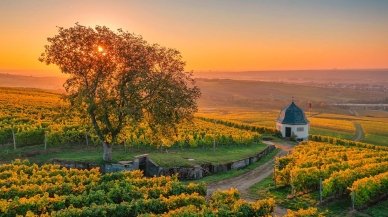
Vineyard in Eltville am Rhein
Bavarian beer and its Hell, Dunkel, and Schwarzbier types are considered the best in Germany. Beer gastrophiles come here every year from all around the world.
Germany is one of the most prosperous European countries and simply a magnificent land with a heroic and often tragic history behind it. The world has much to learn from Germans: for a long time, they have been considered role models for their punctuality, neatness, and hard-working nature.
There is a special spirit of creativity and humanism - the thing that the rest of the world lacks and the one that attracts people to come here again.
FAQ
Why is Germany called Deutschland?
Germany is called "Deutschland" in the German language, which stems from the Old High German word "diutisc," referring to the people of the nation ("the people" or "of the people").
How big is the German territory?
Germany's territory covers approximately 357,022 square kilometers.
What is the German capital?
The capital of Germany is Berlin.
What is Germany's population?
Germany's population is around 83 million people.
What is the language in Germany called?
The official language of Germany is German.
Does Germany use euros?
Yes, Germany uses the euro (EUR) as its currency.
What is Germany's main religion?
Christianity is the main religion in Germany, with the largest denominations being Roman Catholicism and Protestantism (particularly Lutheranism).
Do I need a visa to go to Germany?
Whether you need a visa to enter Germany depends on your nationality. Citizens of many countries do need a visa, while others, particularly those from EU countries and some other nations, do not.
Do EU citizens need a visa for Germany?
No, EU citizens do not need a visa to travel to Germany.
Is Germany a member of the Schengen area?
Yes, Germany is a member of the Schengen area, allowing passport-free travel across member states.
For what is Germany famous for?
Germany is famous for its rich history, contributions to philosophy, literature, music, and science, as well as its automotive industry, beer, Oktoberfest, sausages, and bread varieties.
How is life in Germany?
Life in Germany is characterized by a high standard of living, a strong economy, efficient public services, and a focus on environmental sustainability. It is also known for its rich cultural life and historical heritage.
Why is Germany important to the EU?
Germany plays a crucial role in the European Union as the largest economy in the bloc, a key driver of EU policy, and a major contributor to EU budget. Its political and economic stability is essential for the functioning of the EU.
What is Germany's favorite food?
One of Germany's favorite foods is "Bratwurst," a type of German sausage made from pork, beef, or veal. Other popular dishes include sauerkraut, pretzels, schnitzel, and various types of bread.







